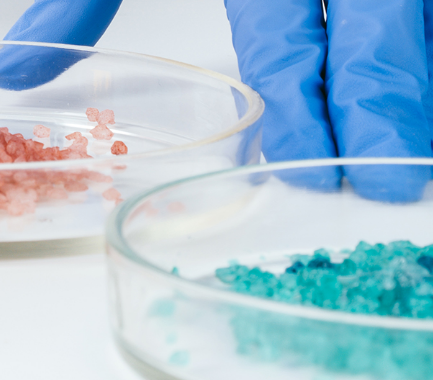Your contact
PENPET-Team - Hamburg

Christoph Meister
Sales
Tel. +49 (0) 40 - 675 7 99 30
sales@penpet.de
Get in touch with us.
Borax decahydrate
Borax decahydrate is a sodium salt from the borates group, which is an important raw material for the chemical industry. The mineral compound is obtained from natural deposits and processed industrially after a cleaning recrystallization.
Borax decahydrate serves as a starting material for the synthesis of sodium perborate and boric acid, and is used in the manufacture of enamel, glass, glass fiber mats, glass fiber insulation, and flame retardants for textiles and wood. The compound is also used as a flux for soldering, and as a wood preservative. Borax decahydrate is also used as an ant poison, and moth repellent. In the household, the substance is found as a component of many detergents, cleaning products, and bleaches.
At PENPET, you can get borax decahydrate of the highest quality - from a reliable partner who will also meet your requirements in the long term. We look forward to receiving your inquiry for an individual offer. Prompt delivery of the crystalline solid can be in the form of powder or granules in packaging of different weights.
CAS no. 1303-96-4
EINECS no. 215-540-4
Empirical formula: Na2B4O7
Synonyms: Sodium tetraborate, tetraboron disodium heptoxide, disodium tetraborate, orthoboric acid sodium salt, E 285
Areas of application: Raw material for chemical synthesis, wood preservatives, flux, used as an ant poison, raw material for the production of glass, enamel and fiberglass products, component of cleaning products, detergents and bleaches
More Information
Borax decahydrate is a mineral solid: its crystals consist of sodium, boron, and oxygen, as well as enclosed water of crystallization. The salt is not composed of sodium cations and tetraborate anions, and ten molecules each of the enclosed water, as the names decahydrate or sodium tetraborate would suggest. Rather, it is already hydrogenated tetrahydroxyborate anions. Together with the sodium ions, these form a crystal lattice in which eight molecules of water are enclosed.
The odorless borax decahydrate is a white solid with a crystalline structure. When the substance is heated, the binding forces within the crystal decrease, so that the enclosed water of crystallization gradually dissolves from the structure above a temperature of 75 °C. On rapid heating, the sodium cations and tetrahydroxyborate anions are converted into an aqueous solution with the previously enclosed water. When heated above 740 °C, the compound assumes the state of a glass-like melt, which it retains until its thermal decomposition at 1575 °C.
Borax decahydrate is hygroscopic and absorbs water. The compound is soluble in water and many organic solvents, such as methanol, glycerin, formamide, and ethylene glycol. However, it is only very poorly soluble in ethanol. In aqueous solution, borax decahydrate is slightly basic.
Borax decahydrate is hygroscopic as a solid and will dissolve in water. However, the compound is chemically stable when stored in a dry, airtight environment. Dangerous reactions occur in contact with acids, metal salts, and strong oxidizing agents. Borax decahydrate is non-flammable. Dust from the compound is also not flammable or explosive. The substance decomposes when heated to high temperatures, releasing noxious gases such as sodium oxide.
Borax decahydrate, especially in solid form, can cause skin and eye irritation. With repeated or prolonged exposure, the substance may cause dermatitis and skin sensitization. Body parts affected by contact should be cleaned immediately under running water and with soap. Severe irritation, reddening and damage to the conjunctiva and cornea can occur in the eye. These are usually reversible. The eye should be rinsed thoroughly with water and treated by an ophthalmologist. Milder symptoms are generally to be expected upon contact with the aqueous solution of borax decahydrate.
Inhaled dust from the solid or vapors from the aqueous solution can cause painful irritation of the respiratory tract and mucous membranes, as well as coughing and breathing difficulties. If borax decahydrate is swallowed, gastrointestinal symptoms such as pain, diarrhea, vomiting, and irritation of the esophagus and gastric mucosa are to be expected. If the compound is absorbed into the metabolism, cardiovascular disorders and disorders of the central nervous system, such as restlessness, irritability, convulsions, drowsiness, convulsions and coma can occur. Kidney dysfunction is possible. Borax decahydrate is also considered a reproductive toxic substance. After accidental oral ingestion, the mouth should be rinsed out thoroughly and water should be drunk to reduce acute symptoms. A medical examination must then be arranged immediately.
Borax decahydrate is considered to be slightly hazardous to water and can cause long-term damage to aquatic organisms. Escape of the compound into the water bodies, the ground or waste water must be avoided. The competent authorities must be informed if large quantities of the substance enter the environment. Borax decahydrate is not subject to any special transport regulations.
